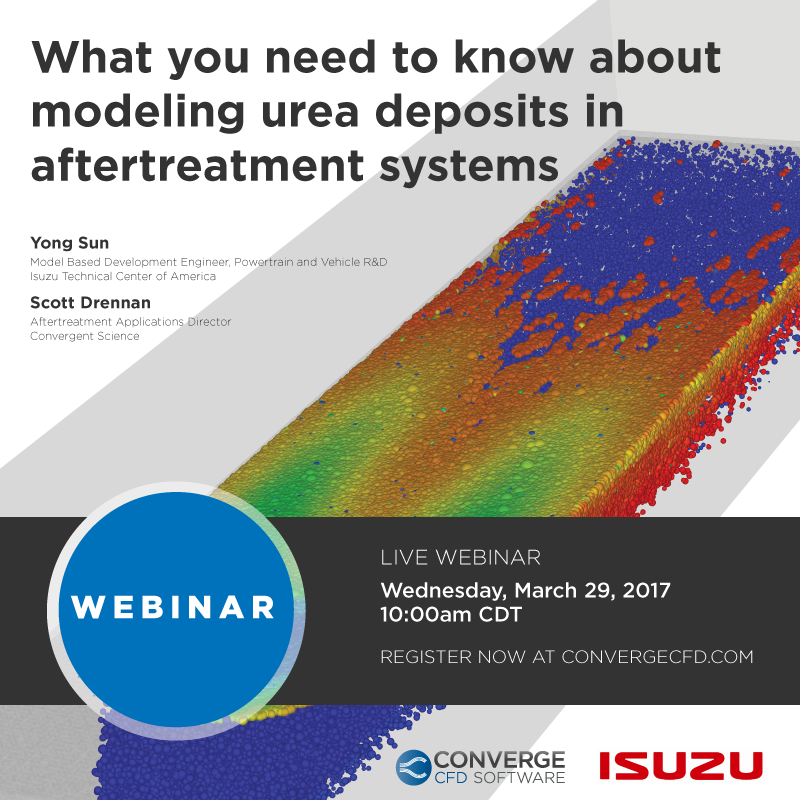
Yong Sun
Model Based Development Engineer
Powertrain and Vehicle R&D
Isuzu Technical Center of America
Scott Drennan
Aftertreatment Applications Director
Convergent Science
Optimal engine aftertreatment system design is critical to the success of cars, trucks, tractors, large ships, and power generators in today’s regulatory environment. These systems have proven to be effective at reducing NOx over a wide range of operating conditions. However, design changes related to reducing the size to modern compact Urea/SCR systems and lower exhaust temperatures have increased the possibility of urea deposit formation. Urea deposits result when urea in films and droplets undergoes undesirable secondary reactions that produce by-products such as ammelide, biuret, and cyanuric acid (CYA). These by-products do not readily decompose and will form a solid deposit that can reduce aftertreatment system performance by decreasing overall mixing, lowering de-NOx efficiency, and increasing pressure drop. Avoiding or mitigating urea deposits is a primary design goal of modern aftertreatment systems. In this webinar, we’ll show you CONVERGE’s proven capability of identifying which films are at risk for urea deposit formation. Also, we will discuss CONVERGE’s new detailed decomposition of urea model that is coupled with state-of-the-art spray and spray-wall interaction models to allow designers to identify which films will form urea deposits.
Who should attend: